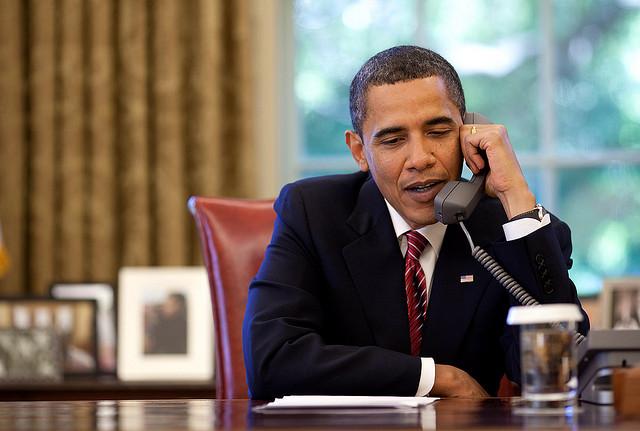In his recent speech at American University, President Obama slammed critics of the Iran nuclear deal suggesting that they offered no alternative but war and were regurgitating the same arguments used to justify the use of force against Iraq in 2002.
Senator Tom Corker (R-TN), Chairman of the Senate Foreign Relations Committee, rejected this as ‘hyperbole,’ while Senator Chuck Schumer (D-NY) suggested returning to the negotiating table to ‘get a better deal.’
From containment to re-engagement, maintaining the sanctions or war, the alternatives to the Joint Comprehensive Plan of Action (JCPOA) are impractical. Containment is unworkable because of the divisions among the members of the Gulf Cooperation Council (GCC). Other critics suggest that maintaining the sanctions regime will elicit more concessions from Iran. While it’s clear the sanctions have damaged the Iranian economy, it’s unclear whether they brought the Iranians to the table, or if the construction of additional centrifuges compelled the US to negotiate. Critics from the left suggest that the Obama Administration should pursue an Ostpolitik or Sunshine-like policy toward Iran. This is highly unlikely to be effective given the political climate in the US. Finally, air strikes are unlikely to be effective because the Iranian program is scattered throughout the country.
Here are the options as I see them:
Option 1: Containment
George Will described containment as the ‘least awful choice‘ among the alternatives. It’s highly unlikely to work because the GCC states and several others can’t form an alliance against Iran.
As conceptualised by George Kennan, containment saw the Soviet domestic apparatus as the primary source of the Kremlin’s conduct. A counter-balancing coalition that would keep Moscow within its borders would rob the regime of foreign victories and undermine its grip on power.
The GCC states, Israel and Turkey all have misgivings about an Iranian nuclear program and Tehran’s growing influence. Saudi Arabia’s adventure in Yemen was designed to counter Iranian influence along its borders. Riyadh, Doha and Abu Dhabi have supported the overthrow of Bashir al-Assad in part to strike a blow to Iran’s regional influence. But internecine disputes between them hinder efforts to balance Iran.
They’ve been unable to overcome what George Liska called ‘alliance handicaps,’ or hurdles that prevent two or more states from allying with each other on the basis of their short-term interest, to contain Iran. Previous efforts, such as the GCC-Plus Two initiative, failed to come to fruition. In addition, the Gulf States can’t get their act together to erect a missile defense shield to guard against an attack from Iran.
Option 2: Double-Down on Engagement
If the Congress rejects the JCOPA, the Obama Administration could embark on its own version of Ostpolitik. There are two types of engagement: transactional and transformational. The former refers to tit-for-tat reciprocity, while the latter is designed to bring about regime change through the use of carrots. Some pundits, such as Flynt and Hillary Mann Leverett, have argued that the Obama Administration’s mistake has been that it hasn’t engaged Iran enough. If at first the Supreme Leader, Ali Khamenei, rejects such overtures, the Obama Administration could engage, and engage again until the regime reciprocates or collapses. However, this is politically unsustainable.
If both chambers of Congress reject the Iran deal by veto-proof majorities, Obama will have little political capital to return to the negotiating table, making it nearly impossible for him to revisit a new deal with Iran.
Option 3: ‘Old Faithful’—maintain the sanctions regime
Many Republicans and Democrats have condemned the JCPOA. Some have suggested that the sanctions that were imposed on Iran brought it to the table; maintaining them should result in more concessions.
However, Iranian hard-liners have a similar argument, suggesting it was centrifuges that brought the US to the table. Circa 2003, the Iranians had 164 centrifuges; by 2008, they had 8,000.
The myriad of sanctions and removing it from the SWIFT system has caused Iran economic pain. However, the desired end-result is to compel its leaders to alter their behavior. It’s hard to say how effective the sanctions have been at this time. Continuing the sanctions regime may fuel Iran’s desire to cross the nuclear Rubicon.
Option 4: War
Senator Tom Cotton (R-AR) has suggested that a US operation along the lines of Operation Desert Fox would damage Iran’s nuclear capabilities. He cited Israel’s strikes against Osirak in 1981 and the Syrian reactor in 2007 as evidence such an attack would work. Except, Osirak wasn’t a success. And the Iranian program isn’t the Syrian program. The Israeli strike in 1981 encouraged Saddam to accelerate and disperse his program to make it invulnerable to future strikes. The Israeli strike against the Syrian reactor was successful was because the Syrian program was small and centralized in a single location. The Iranian program is like Iraq’s after Osirak: large and diffuse. Scholars argue that for this reason alone an attack against Iran is likely to fail.
The best option: let Obama be Obama
Obama could ignore Congress and implement parts of the deal on his own, even if both the House and the Senate reject the JCPOA by veto-proof majorities. While there are some limits on Obama’s ability to unilaterally provide sanctions relief, he has broad authority to implement broad swathes of the deal. The nuclear deal closes over pathways to enrichment and sets restrictions on Iran’s supply chain. Violations can be caught in the 24 day period, by intelligence agencies and, even, using open-source verification.
If Obama implements the JCPOA, this will put ‘the Hill in Defcon 1 mode.’ However, this is better than the unworkable alternatives.
